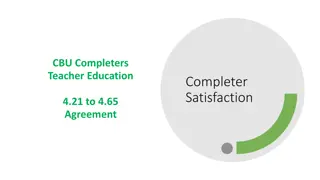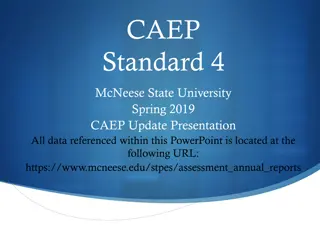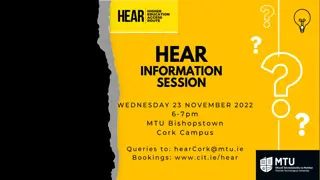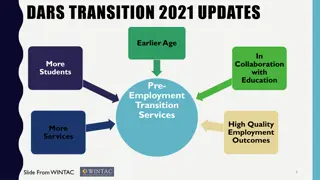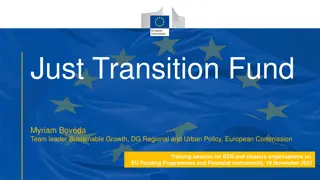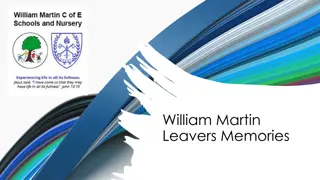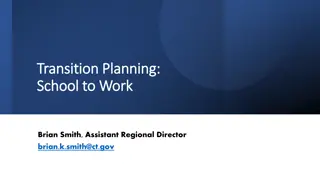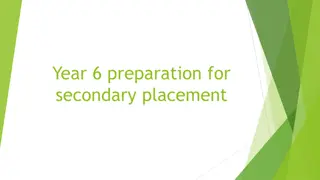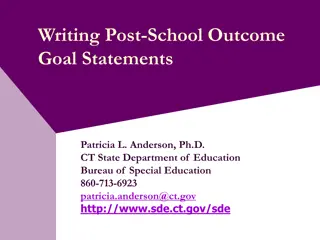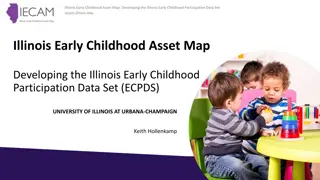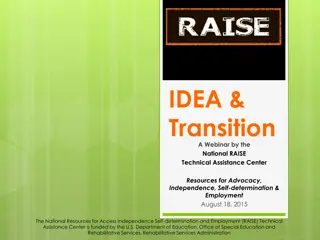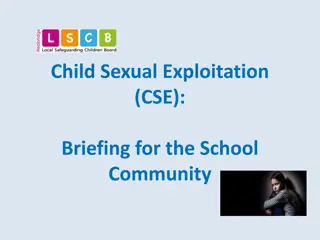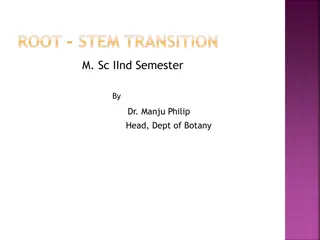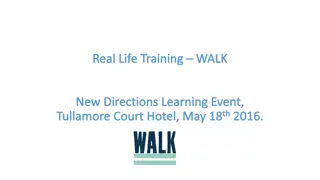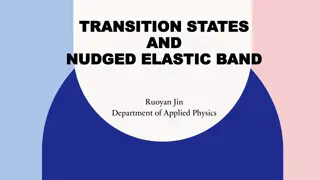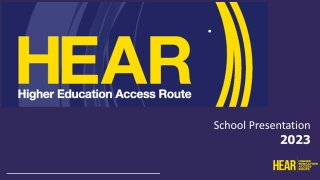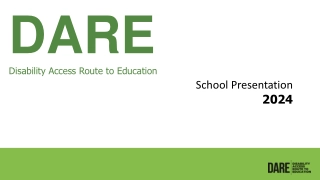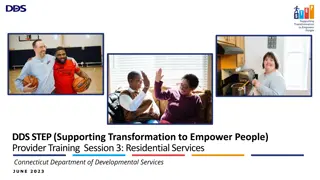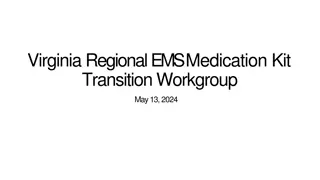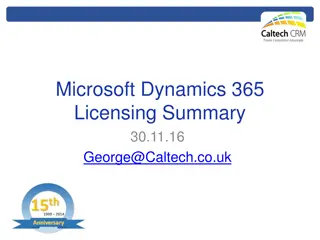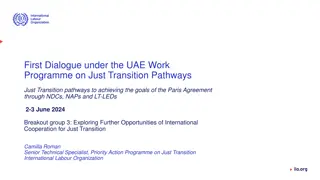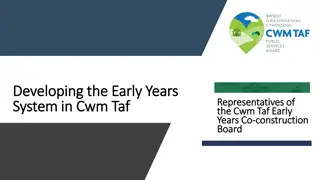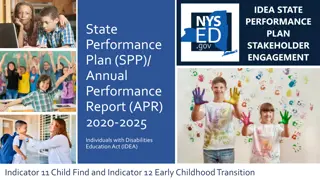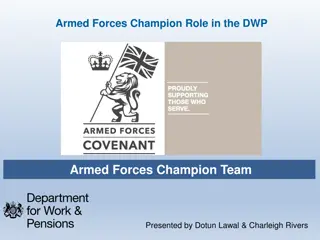Understanding School Completers and Early Leavers Transition Data
Exploring the transition paths of school completers and early leavers in the education system using data matching techniques to fill gaps and provide insights into their progression to higher education and other destinations. The analysis sheds light on the educational outcomes and employment activities of students post-secondary school.
Download Presentation

Please find below an Image/Link to download the presentation.
The content on the website is provided AS IS for your information and personal use only. It may not be sold, licensed, or shared on other websites without obtaining consent from the author. Download presentation by click this link. If you encounter any issues during the download, it is possible that the publisher has removed the file from their server.
E N D
Presentation Transcript
School Completers and Early Leavers What Next? Department of Education and Skills CSO Administrative Data Seminar 20thFebruary 2014 1 Nicola Tickner
Starting point 2 The Department of Education and Skills took the initiative to explore the potential of data matching to fill current data gaps following the publication of the National Statistics Board report entitled The Irish Statistics System: The Way Forward and Joined Up Government Needs Joined Up Data in December 2011 Undertaken an officer of statistics under the stats act, in the CSO The tracking was carried out using data matching and was also supplemented with estimations for other destinations for which individualised data was not available
Overview 3 Starting Point Pupils Enrolled on the Post Primary Pupil Database in the 2009/2010 academic year but not in the 2010/2011 academic year 54,824 were School Completers (i.e. were enrolled in final year of LC in 2009/2010) 7,713 were Early Leavers (i.e. left prior to final year of LC) Explored the potential of data matching to fill current data gaps (as an officer of statistics under the stats act, in the CSO) Matched against other available data sources (CSOPPSN) Estimations also used where individualised data not available
School Completers - Summary 4 Graph A: School Completers Classified by Destination % 60.0 50.4 50.0 40.0 27.6 30.0 20.0 10.3 7.3 10.0 4.5 0.0 Higher Education Second Level/Further Education Social Welfare Activity Employment Other
School Completers Progression to Higher Education 5 44% direct match with HEA Student Record System More males (44.5%) than females (43.5%) Additional Estimates of 0.5% (non PPSN coverage) 2.3% Non HEA Aided Institutions 3.6% Higher Education Abroad (mostly UK) Overall, 50.4% progressed directly to Higher Ed
School Completers Who Progressed Directly to Higher Education 6 (following information refers to HEA Aided Institutions Only) 48.1% of those who pursued the traditional LC 52.0% of those who repeated LC 43.2% of those who pursued the LCVP Of those in Higher Ed, 41.6% had employment activity during 2010 (males 45.6%, females 37.5%)
Percentage of School Completers from Schools with Various Characteristics who Progressed Directly to Higher Education 7 % Secondary - Fee Charging 65.5 Secondary - Non Fee Charging 47.2 Vocational 34.4 Community 38.2 Comprehensive 42.4 DEIS 24.2 non-DEIS 49.1 All Irish 57.5 No Irish 43.7 Some Pupils All Subjects Through Irish 41.3 Some Pupils Some Subjects Through Irish 44.4 0.0 10.0 20.0 30.0 40.0 50.0 60.0 70.0
School Completers Progression to PLC courses 8 19.8% direct progression rate Increasing, was 16.4% in 2001/2002 37.3% of School Completers who pursued the LCA 21.9% of School Completers who pursued the LCVP 17.5% of School Completers who pursued the LC
Percentage of School Completers from Schools with Various Characteristics who Progressed Directly to to PLC courses % 9 Secondary - Fee Charging 6.8 Secondary - Non Fee Charging 19.1 Vocational 23.7 Community 22.5 Comprehensive 21.1 DEIS 27.1 non-DEIS 18.0 All Irish 11.6 No Irish 20.0 Some Pupils All Subjects Through Irish 24.5 Some Pupils Some Subjects Through Irish 16.8 0.0 5.0 10.0 15.0 20.0 25.0 30.0
Early Leavers - Summary 10 Graph B: Early Leavers - Classified by Destination % 60.0 55.0 50.0 40.0 30.0 16.9 20.0 13.9 6.6 10.0 6.1 1.6 0.0 Second Level/Further Education Social Welfare Activity Employment Outward Migration Education Outside the State Other
Early Leavers - Summary (contd/ ) 11 Early Leavers - Classified by Destination in 2010 Total Cohort Of which enrolled in Post-Leaving Cert. Course (PLC) F S Course 2010 Of those remaining Social Welfare Activity on 31st December 2010 Number % of Cohort 7,713 100.0 114 473 1.5 6.1 511 6.6 Of those with no social welfare activity on 31st December 2010 Employment Activity During 2010 469 6.1 Outward Migration up to June 2010~ Enrolled in Education or Training Outside of the State 120 1,070 1.6 13.9 Estimates for Youthreach* Enrolled in Private Educational Institutions* 1,941 1,711 25.2 22.2 Other (includes emigration, seasonal employment abroad and all other categories) * See Background Notes. ~ Data source only covers why students left between 30th of September and 30th of June. 1,304 16.9
Early Leavers Time Series 12 Early Leavers classified by Sex as a Percentage of Total Enrolment Males 5.0 Females 4.0 4.0 3.9 3.8 4.0 3.2 3.0 2.8 2.7 2.7 3.0 2.7 2.7 2.6 2.5 2.4 2.0 1.0 0.0 2003/2004 2004/2005 2005/2006 2006/2007 2007/2008 2008/2009 2009/2010
Early Leavers Differences in Gender? 13 Higher proportion of male Early Leavers enrol in PLC courses Higher proportion of female Early Leavers enrol in F S courses More males than females in Youthreach More males than females in Education or Training outside the State
Early Leavers by Programme 14 4,414 (57.2% )left before enrolment in year 1 of a LC programme High proportion of Early Leavers who left after JC year 3 or TY estimated to be in Youthreach but also a sizeable amount who left after enrolment in LC year 1 By programme, the most leavers for whom destination is unknown are for those who leave after first or second year of JC/JCSP (777) Particularly for females (520)
Percentage of Early Leavers from Schools with Various Characteristics 15 School Characteristic 3.8 Secondary Fee Charging 2.1 Secondary Non Fee Charging 3.0 Vocational 2.2 Community 1.4 Comprehensive 3.9 DEIS 2.1 non-DEIS 1.0 All pupils taught all subjects through Irish 2.5 No subjects taught through Irish 2.5 Some pupils taught all subjects through Irish 3.3 Some pupils taught some subjects through Irish 0.0 0.5 1.0 1.5 2.0 2.5 3.0 3.5 4.0 4.5 %
16 Early Leavers - Classified by Nationality All Total % of Total Enrolment Early Enrolment* Leavers Irish Nationality British Nationality Nationality of a State in the EU 15 except Ireland and the United Kingdom Nationality of State in the EU 12 Nationality of Another State in Europe other than the EU 27 Nationality of the USA or Canada Nationality of a Country in Latin or Southern America Nationality of a Country in Asia Nationality of a Country in Africa Nationality of a Country in Australasia or Oceania 283,721 6363 3,010 4,895 282 1,405 1.7 4.4 46.7 8061 1106 1404 442 3754 3989 303 492 55 103 71 198 177 35 6.1 5.0 7.3 16.1 5.3 4.4 11.6 2.5 Total 312,153 7,713 * Includes pupils in final year of senior cycle. The EU 15 comprises the countries before enlargement of the EU on 1 May 2004 (i.e. Austria, Belgium, Denmark, Finland, France, Germany, Greece, Ireland, Italy, Luxembourg, Netherlands, Spain, Sweden, Portugal, United Kingdom). The EU 12 is defined as the 10 accession countries that joined the EU on 1 May 2004 (i.e. Cyprus, Czech Republic, Estonia, Hungary, Latvia, Lithuania, Malta, Poland, Slovakia, Slovenia) and includes the two new accession states that joined the EU on 1 January 2007 (i.e. Bulgaria and Romania).
Links to Reports 17 http://www.education.ie/en/Publications/Statistics/Schoo l-Completers-What-Next-.pdf http://www.education.ie/en/Publications/Statistics/Early- Leavers-What-Next-.pdf Published May 2013 Also some additional tables on website
Future plans 18 Repeat of exercise for following years cohort Possible expansion of the data depending on data sources available Exploration of the data presented to show the destinations of the School Completers after two years
Current Position on Data Sharing 19 Putting a National Data Infrastructure in place is central to the Public Service Reform Plan. This would put in place an infrastructure to allow the efficient running of our public administration. The National Statistics Board has highlighted the importance of developing such an infrastructure (both national and regional) and has suggested that this would compromise of three key pillars, all with a unique identifier 1. people (PPSN), 2. businesses (unique business identifier) 3. and buildings (postcode).
20 Draft legislation is in place focusing on PPSN but also on the unique Health Identifier. Focus no longer on business identifier. Progress has been made on the implementation of postcodes (March 2015). Data Sharing would be greatly helped if facilitated by legislation.
21 Comments or Questions? Nicola_Tickner@education.gov.ie


